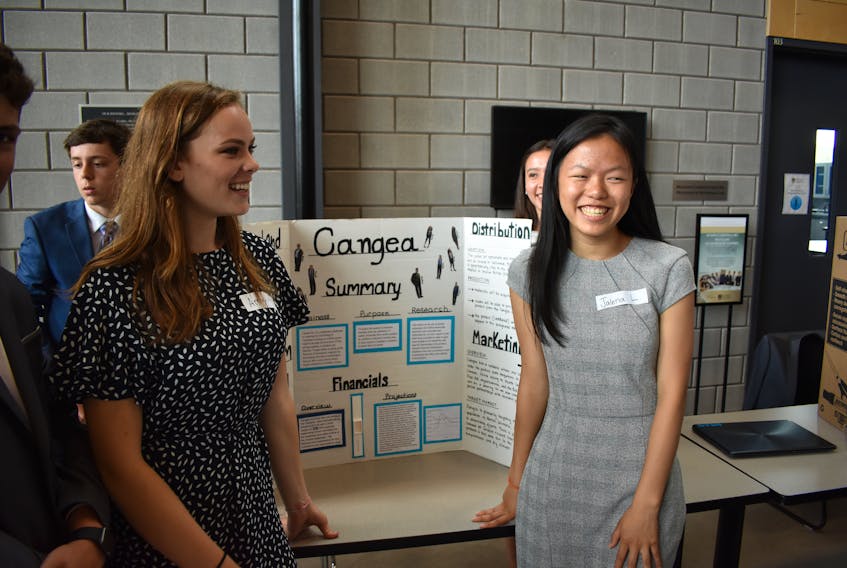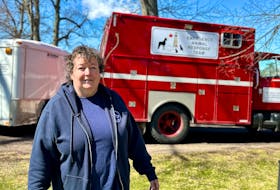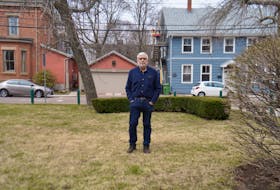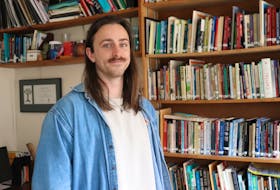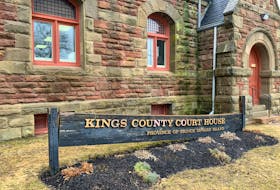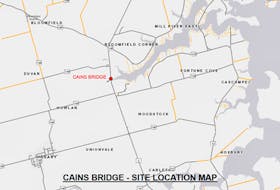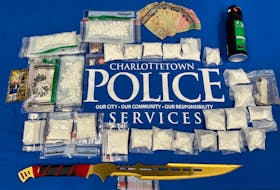High school students from across Canada spent the month of July looking for answers to some complex problems.
And last week, some of them got the chance to present their solutions in Charlottetown as students in the SHAD program held open houses at 16 campuses across Canada, including at UPEI School of Sustainable Design Engineering building.
SHAD’s 2018 challenge was: How might we help Canadian communities be more resilient in a natural disaster?

One group decided tackled Canada’s most common natural disaster – flooding. Zara Toupin Ramlal, who just graduated from high school in Ontario, was part of the group who came up with the idea for H20 Turbo - a hydroelectric turbine to generate power during a flood. Electricity could be produced by rolling the turbine into water where it would start spinning with the flow of flood water, said Toupin Ramlal.
“It would create enough power to power a sump pump or a mini fridge or 60 charges on a phone. So, it’s about 800 watts all in all.”
While her group thinks the product would benefit all Canadians, group member Anoushka Khanna said there was a target market in mind.
“We decided to focus on Calgary, Alberta, because there is a lot of flooding there. We would offer the product online so all Canadians could access it, but the primary entry market point is Calgary.”
Another group of students focused on forest fires, more specifically carbon monoxide poisoning.
“We realized there was a huge issue,” said Jalena Lee. “Eighty per cent of people (who die) in forest fires are dying from carbon monoxide.”
This is prevalent in small communities as some people are not appropriately triaged during disasters because the signs of poisoning can be missed.
“We made a band,” Lee said pointing to a prototype that looked like an Apple watch stuck to poster board. The product is called Cangea. In the centre of the band, a square holds a chemical which detects carbon monoxide.
“There is a small reaction of palladium dichloride. You breathe into (the band) and the palladium dichloride will change colour to tell you if there is carbon monoxide in your lungs.”
If you see the colour change you are able to get immediate help because you know the poisonous chemical is in your lungs, Lee said.
The initial market would be places in Canada which have frequent forest fires, but the group said it would expand the product globally and outside of the natural disaster market.
“We could expand to the health market. It could have implications for smokers, and we could partner with Fitbit and things like that,” Lee said.
Another SHAD group thought past the physical damage natural disasters can cause and focused on how they can affect the human mind by presenting a product called SAND (Support and Aid after Natural Disaster)
“We decided to focus on the mental health aspect of natural disasters,” said Toronto teen Ben Lev.
Mental health during natural disasters is often overlooked but can lead to illnesses like PTSD.
“Basically, our solution is we offer a web-based service where victims of natural disaster can talk to mental health professionals like phycologists and therapists online.”
The group would run SAND as a non-profit organization.
“Our whole goal is to offer this for free to people, especially because people going through these things don’t have a lot of money. They often need to rebuild,” Levy said.
During July, 900 students from across Canada spent nearly a month together on university campuses developing their projects.
However, SHAD isn’t all about work.
“The base of the SHAD program is vague in terms of description,” said Levy.
“The whole point is you have to be a very open-minded person to come here. You don’t know what to expect. We realized this is not school this is something I think that we wish was school.”
At a glance
- SHAD students at UPEI got a chance to see the Island on weekends and explored downtown Charlottetown and beaches.
- SHAD, which began in 1980, is named after a creek where in Aurora, Ont., where it all began.
- The mission of SHAD is to empower exceptional youth in order to make the world a better place. It offers unique experimental learning rooted in science, technology, engineering, the arts and mathematics.

